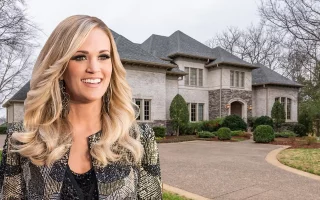Step inside the world of home design, where every choice matters and every detail speaks volumes. Bifold doors have long been considered a stylish and practical choice in terms of enhancing your living space. These versatile doors once soared in popularity due to their sleek folding panels connecting indoor and outdoor spaces seamlessly. Their reign, however, is now in decline, as with any trend. We will explore the factors contributing to the waning allure of bifold doors and offer alternative options for homeowners seeking innovative solutions for their living spaces.
The initial popularity of bifold doors
One of the key reasons for the initial popularity of bifold doors was their ability to create a sense of spaciousness. Their large glass panels and minimal frames allowed natural light to flood into homes, making rooms feel brighter and more inviting. Bifold doors offered a unique way to merge indoor living areas with outdoor patios or gardens. Homeowners loved opening their living spaces completely during warmer months, creating a seamless flow between indoors and outdoors.
Factors contributing to the decline in popularity
There are some important factors :
Limited design options
Limited design options have been a major factor contributing to the decline in the popularity of bifold doors. In the past, homeowners were drawn to these doors for their sleek and modern appearance. However, as time went on, it became apparent that there were limited options when it came to customization. One of the main drawbacks of bifold doors is that they often come in standard sizes and configurations, leaving little room for personalization. This can frustrate homeowners who want their doors to match their unique aesthetic preferences or fit into unconventional spaces.
High maintenance and repair costs
One reason for the high maintenance costs is that bifold doors require regular cleaning and lubrication to ensure smooth operation. The intricate mechanism of the folding panels can accumulate dirt and debris over time, leading to stiffness or jamming. This affects their functionality and increases the risk of damage if excessive force is applied. Any damage or wear on the tracks, hinges, or seals will require professional repairs, which can be costly. Due to their specialized design, replacement parts for bifold doors are typically more expensive than other door options.
Difficulty with installation
Installing bifold doors can be challenging and time-consuming, contributing to their decline in popularity among homeowners. One of the main issues is that they require precise measurements and alignment during the installation process. Bifold doors need to be perfectly level and plumb to ensure smooth operation. Any slight misalignment can lead to problems such as sticking or jamming, making it difficult to open or close the doors properly. This precision requirement often requires professional assistance, adding an extra cost for homeowners. Installing bifold doors involves a complex series of tracks and hinges that must be installed correctly for optimal functionality. These intricate components can be tricky to assemble, especially for those not experienced in indoor installations.
Lack of security features
One of the factors contributing to the decline in the popularity of bifold doors is the lack of security features they often possess. While bifold doors can be visually appealing and provide a seamless connection between indoor and outdoor spaces, their design can sometimes compromise security. The nature of bifold doors with multiple panels connected by hinges makes them more vulnerable to forced entry than other types of doors. The thinness of the door frames and glass panels also make it easier for potential intruders to break through. Traditional locking mechanisms used in bifold doors may not provide sufficient protection against determined burglars. Some homeowners have reported that their bi-fold doors were easily bypassed or pried open due to inadequate locks or poor installation.
Unfavorable weather resistance
One reason why bifold doors may not be ideal for withstanding harsh weather is because of their construction. These doors are made up of multiple panels that fold and glide along a track when opened or closed. While this design allows for a wide opening and seamless transition between indoor and outdoor spaces, it also means that there are more potential points of vulnerability when it comes to keeping out wind, rain, and even extreme temperatures. Another factor that affects the weather resistance of bifold doors is the material used in their construction. Some lower-quality materials may not be able to effectively prevent water infiltration or provide adequate insulation against heat loss or gain. This can result in drafts and energy inefficiency during colder months or excessive heat transfer during hotter seasons.
Alternative options for homeowners
These alternatives offer unique advantages and can enhance any home’s aesthetic appeal and functionality.
- French doors: Known for their elegant and timeless design, they add sophistication to any space. They provide a wide opening, allowing natural light to flood in while creating a seamless transition between indoor and outdoor areas.
- Sliding glass doors: Offering sleek lines and modern aesthetics, sliding glass doors are an excellent choice for those seeking unobstructed views. With smooth gliding mechanisms, they maximize space utilization while providing ample natural light.
- Pivot doors: Perfectly suited for contemporary homes, they make a bold statement with their unique rotating hinge mechanism. They create an impressive entrance while offering flexibility in size and design.
- Pocket doors: Ideal when space is limited, or you want to create separate living spaces without sacrificing floor area, pocket doors slide into the wall cavity when opened, saving valuable square footage.
- Folding patio doors: Similar to bifold doors but with improved features such as advanced security systems and enhanced weather resistance technology, folding patio doors offer durability alongside versatility.





